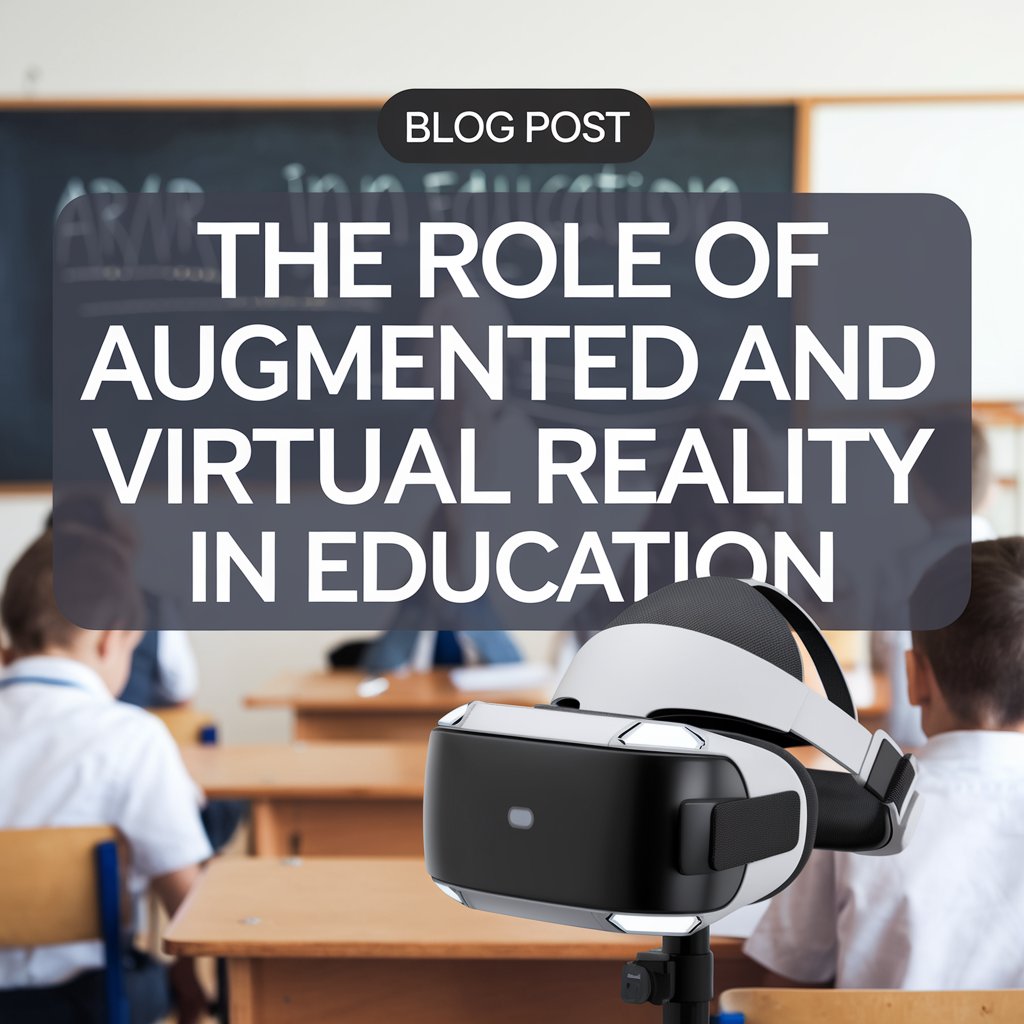In today’s rapidly evolving digital landscape, the integration of technology in education has never been more crucial. Among the forefront of these advancements are Augmented Reality (AR) and Virtual Reality (VR). These immersive technologies are redefining how educators approach teaching and how students learn. Let’s explore the transformative role of AR and VR in education.
Understanding AR and VR
Augmented Reality (AR) enhances the real world by overlaying digital information onto physical environments. For instance, using a smartphone or AR glasses, students can see 3D models of planets or historical artifacts integrated into their surroundings.
On the other hand, Virtual Reality (VR) creates entirely simulated environments that users can explore. By wearing VR headsets, students can immerse themselves in different scenarios, such as walking through ancient Rome or conducting virtual science experiments.
Benefits of AR and VR in Education
The benefits of incorporating AR and VR into education are numerous:
- Enhanced Engagement and Interactivity: These technologies capture students’ attention in ways that traditional methods cannot. Learning becomes an exciting adventure rather than a passive experience.
- Improved Retention of Information: Studies show that immersive experiences lead to better memory retention. By experiencing concepts firsthand, students are more likely to remember what they’ve learned.
- Personalized Learning Experiences: AR and VR can be tailored to meet individual students’ needs, allowing them to progress at their own pace and explore topics that interest them.
Applications of AR in Education
AR offers a wide range of applications in educational settings:
- Interactive Learning Materials: Textbooks can come to life through AR apps, allowing students to interact with 3D models and animations, making complex concepts easier to grasp.
- Field Trips and Virtual Tours: With AR, students can take virtual field trips to historical sites or museums without leaving the classroom, expanding their horizons and knowledge.
- Gamification of Learning: AR can turn learning into a game, making it more enjoyable and motivating for students. For example, scavenger hunts can encourage exploration and learning in a fun way.
Applications of VR in Education
VR technology has equally exciting applications:
- Immersive Learning Environments: Students can engage in fully immersive worlds that simulate real-life situations. For example, medical students can practice surgery in a risk-free virtual environment.
- Simulation-Based Training: VR can simulate various scenarios for training purposes, such as emergency response or flight training, providing hands-on experience without real-world consequences.
- Collaboration in Virtual Spaces: VR can facilitate collaboration among students from different locations, allowing them to work together in a shared virtual environment, enhancing teamwork skills.
Case Studies of AR and VR in Education
Many schools and universities have successfully implemented AR and VR technologies:
- Stanford University has utilized VR for training medical students, allowing them to practice procedures in a realistic but controlled setting.
- Google Expeditions enables teachers to take students on virtual field trips to explore places they may never visit in person, from the Great Wall of China to the surface of Mars.
EdTech companies are also leading the charge, creating engaging AR and VR content tailored for various subjects and grade levels.
Challenges and Limitations
While the benefits are substantial, challenges remain:
- Cost of Technology and Equipment: Implementing AR and VR can be costly, with expenses for devices and software posing a barrier for some schools.
- Teacher Training and Acceptance: Educators need proper training to effectively integrate these technologies into their curricula, and some may resist adopting new methods.
- Accessibility Issues: Not all students have equal access to the necessary technology, which could widen the digital divide.
The Future of AR and VR in Education
The future for AR and VR in education looks promising, with trends such as:
- Interactivity and Personalization: Advances in technology will continue to enhance the interactivity of learning experiences and tailor them to individual needs.
- Hybrid Learning Environments: The combination of AR and VR with traditional methods will create hybrid learning environments that can cater to various learning styles.
The Role of Content Creation and Development
For AR and VR to reach their full potential in education, high-quality educational content is essential. This includes:
- Developing Engaging Experiences: Content creators need to focus on creating interactive, educational experiences that align with learning objectives.
- Tools for Creating AR and VR Experiences: There are various platforms available that enable educators to develop their own AR and VR content, fostering creativity and innovation.
Conclusion
The integration of Augmented Reality and Virtual Reality in education represents a significant leap forward in teaching and learning. These technologies not only enhance engagement and retention but also allow for personalized and immersive learning experiences. As educators and institutions embrace these innovations, we can expect to see even more dynamic and effective educational practices emerge.
FAQs
- How do AR and VR enhance traditional learning methods?
- AR and VR provide immersive experiences that engage students actively, making learning more interactive and enjoyable.
- What subjects benefit the most from AR and VR applications?
- Subjects like science, history, and art often benefit significantly, as AR and VR can bring complex concepts and historical events to life.
- Are there any negative impacts of using AR and VR in education?
- Potential drawbacks include over-reliance on technology, accessibility issues, and the need for proper training for effective implementation.
- How accessible is AR and VR technology for schools?
- While costs are decreasing, accessibility can vary widely among schools. Some institutions may struggle to afford the necessary technology and infrastructure.
- What are the future possibilities for AR and VR in education?
- Future developments may include more affordable technology, enhanced content creation tools, and broader adoption of hybrid learning models that incorporate AR and VR seamlessly.
